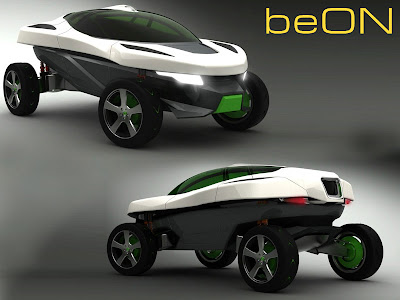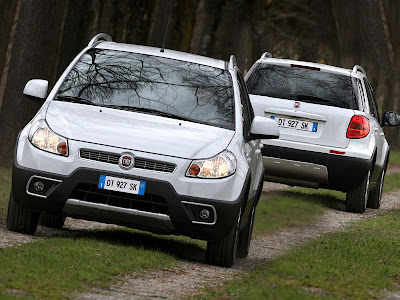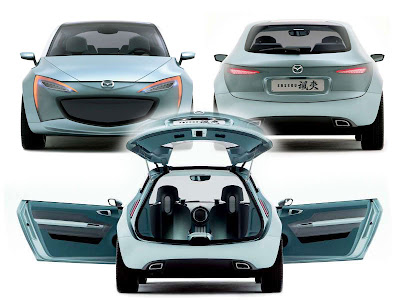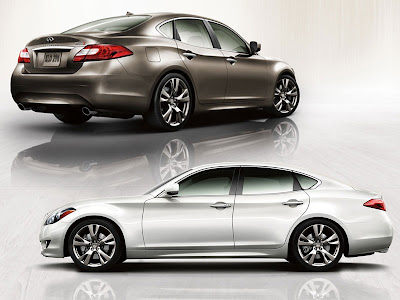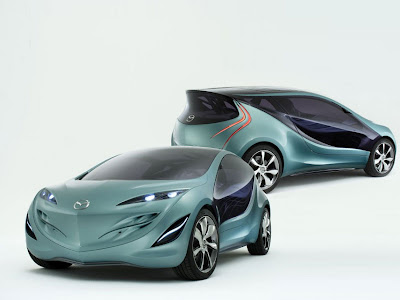F3R Toyota Roominess Hybrid Concept Car
Starting with a simple, blue-sky request for a three-row concept vehicle, Ian Cartabiano, the Project Chief Designer for the vehicle's exterior, and Alan Schneider, Project Chief Designer for the F3R's interior, began readying sketches depicting an adaptable performance vehicle oriented toward a young family.
The decision to explore the possibilities of three-row seating made sense.
Cartabiano and Schneider began the project by listing positive attributes of the minivan. These included its space efficiency, versatility, roominess, handling, fuel efficiency and ride quality.
To create that extension, the design team came up with three very modern looking sets of seats. Each is unique, composed of modern, metal-edged bottoms and asymmetrical backs whose symmetry is completed by semi-integrated headrests. They can provide roomy, comfortable seating for eight adult passengers.
Up front, the driver's seat reclines and swivels, and the passenger seat reclines to form a comfortable chaise. In the middle, the right and center sections of the 40/20/40-percent second-row seats fold into the floor and the left-hand seat reclines fully to form, with the rearmost or third row, an avant-garde sofa built around the sort of conversation area you might find in an upscale home.
This is surrounded by a casual, wrap-around backrest formed by the continuous, flowing curve of the instrument panel, doors and rear seatback panels. These are accented by fiber-optic lighting panels in the seat sides, and in the F3R's right-center grand entry, that can be lit to provide illumination during lounge chat sessions.
But there's more to do here than just chat. That's because Schneider equipped the F3R with two track-mounted flat-panel video screens. These allow the vehicle's occupants to enjoy movies or games whenever they want, and to do so in complete comfort, with control supplied by an audio/video/lighting remote unit that docks in the F3R's dash.
The lounge mode would be useful any time the vehicle is not moving, Schneider said, adding, "It would be ideal when you take the kids to games or sporting events, or when you're just hanging out with friends. It's a living room away from home."
F3R Toyota Roominess Hybrid Concept Car
But if the F3R is a living room away from home, it also offers a very comfortable and very useable motor-vehicle interior. Seating, in transport mode, is stadium-style, with each row just a little higher than the row in front of it to provide optimal passenger comfort and visibility.
And it provides convenient three-door access on both sides to reflect adult-size space in all three rows.
To enhance the F3R's utility, its center-row seats stow individually, and the center seat in the middle row can be configured as a "front-and-center"child seat.
Schneider took special care to design a unique three-tier instrument panel that is, like the interior itself, dual-mode.
But that's not all. On the far right-hand side of this lower panel is the detachable remote-control module that can be taken into the F3R's lounge to control the audio and video systems and the lounge lighting.
Schneider's design emphasizes environmentally sensitive materials, in keeping with the theme of environmental sensitivity suggested by the Hybrid Synergy Drive badging on the F3R. These materials include floor panels made from Ecoresin, a specially formulated resin that can be recycled; and a skin-friendly simulated leather seating material called Mythos that, unlike most plastics, does not produce the harmful chemical dioxin when it is burned.
Cartabiano's starting point for the F3R's exterior shape, meanwhile, featured a van that conveyed maximum volume, with a tall, wedged body shape that incorporated wide, dynamic shoulders, with its sporty 22-inch wheels and wide performance tires planted at the extreme boundaries of all four corners.
What the team wound up with just might be one of the more unique and recognizable front-end treatments to be seen in a while. To get there, Cartabiano started with a front-three-quarter view so he could concentrate on a nose with sculpted, high-mounted headlamps, which help hide the front fascia's corners, and on its wedge profile.
With the basic shape of the F3R set in his mind, and with a front-end concept sketched, Cartabiano began thinking of the rest of the F3R's surfaces, using what he describes as "wet and dry surface taste."
For the F3R's flanks, he chose a highly sculpted, flowing - or wet - shape, with fender flares smoothly integrated into the body. And for the nose and rear he went the opposite direction, choosing very clean lines and surfaces that are very simple - or, in designer-speak, dry.
Then he applied some three-dimensional shaping to the beltline, or shoulder, to get the cabin inset, so that the lower body looks wider than the greenhouse, or upper cabin.
And he came up with a rocker-panel section that incorporates what he calls a comet light-catch.
The result is that the F3R looks like a stylish performance vehicle. But the feeling inside is very airy and light.
Part of that feeling is because the D pillar is angled rearward to create a wraparound rear glass that provides a widescreen view of the world outside when the vehicle is reversing.
F3R Toyota Roominess Hybrid Concept Car
And though the F3R seems to have a high beltline, it isn't as high as it looks. That's the result of what the vehicle's designers call proportion tuning. Said Cartabiano, "The cabin kind of looks chopped, but the beltline is not much higher than that of the current Sienna. This look is a trick done by lowering bottom of the car, making the body look a little thicker."
The result, of course, is a concept vehicle filled not only with intelligent drama, but with exactly the fresh take on three rows of seating, and on the usable space that vans so effectively provide, that Toyota executives were looking for. They wanted anything but a minivan. What they got was a sporty new vehicle that defies an easy label. With a dramatic, iconic shape that is as distinctive as that of the Toyota Prius and an interior that is more adaptable and more family friendly than anything previously seen, it's reasonable to suspect that the automotive world could soon be seeing styling elements from the F3R on future Toyota production vehicles.


























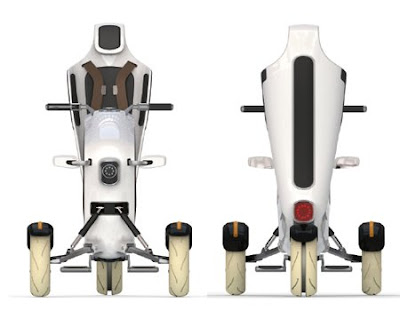

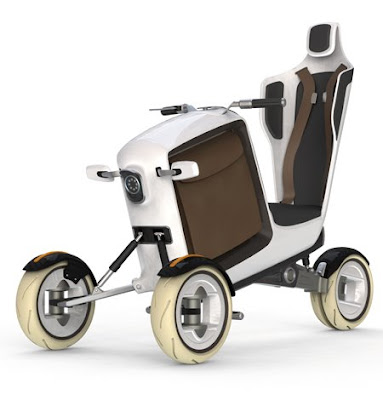

 "Warna cerah seperti hijau dipadukan dengan neon green, tropicana, pop green dan tropicana terlihat cerah, sejuk dan sesuai tema sekarang yang go green ramah lingkungan. Meskipun warna cerah tapi nggak norak, tetapi tetap elegan. Saya kira ini akan jadi tren ke depan," aku Kevin Oktaviano, pemilik mobil Toyota Yaris yang membalut interior mobilnya dengan warna kombinasi hijau, saat ditemui Tempo di Balai Kartini, Jakarta, Rabu (23/12).
"Warna cerah seperti hijau dipadukan dengan neon green, tropicana, pop green dan tropicana terlihat cerah, sejuk dan sesuai tema sekarang yang go green ramah lingkungan. Meskipun warna cerah tapi nggak norak, tetapi tetap elegan. Saya kira ini akan jadi tren ke depan," aku Kevin Oktaviano, pemilik mobil Toyota Yaris yang membalut interior mobilnya dengan warna kombinasi hijau, saat ditemui Tempo di Balai Kartini, Jakarta, Rabu (23/12). Bahkan Helsa mengatakan, warna-warna yang sebelumnya tidak diminati orang kini justeru dicari. Warna Tomato misalnya, di kalangan konsumen usia muda justeru menjadi warna yang banyak dicari. Hal itu juga diakui Kevin. "Warna ceria semacam merah dan gradasi nya itu memiliki aura pembangkit semangat, itu cocok bagi anak muda," imbuh Kevin.
Bahkan Helsa mengatakan, warna-warna yang sebelumnya tidak diminati orang kini justeru dicari. Warna Tomato misalnya, di kalangan konsumen usia muda justeru menjadi warna yang banyak dicari. Hal itu juga diakui Kevin. "Warna ceria semacam merah dan gradasi nya itu memiliki aura pembangkit semangat, itu cocok bagi anak muda," imbuh Kevin. 


























